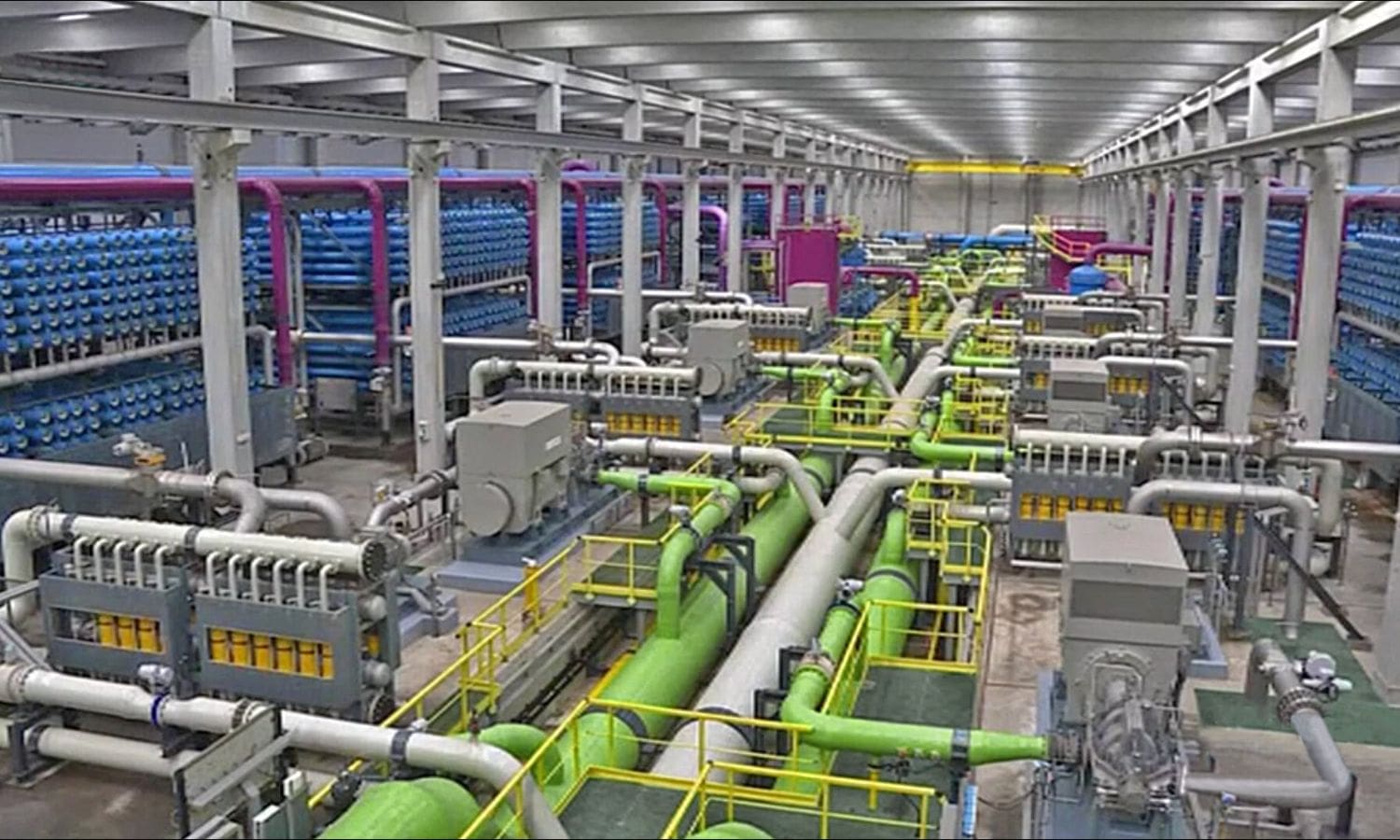Carbon Neutral Desalination: Carbon-Neutral Desalination: The Capture6 Experiment in Korea, an innovative and environmentally conscious solution.
This piece focuses on the integrated carbon capture and desalination process pioneered by Project Octopus in South Korea. Offering a concise overview of the pilot project’s details, emission benefits, challenges, and future prospects.
Discover how this groundbreaking experiment tackles environmental concerns while revolutionizing the desalination industry.
Key Takeaways Of Carbon Neutral Desalination
- Carbon capture technology is being integrated into desalination processes to reduce greenhouse gas emissions.
- Advanced techniques are being used to separate and store carbon dioxide emissions produced during the process.
- The integration of carbon capture and desalination processes can address environmental concerns related to carbon emissions and freshwater scarcity.
- The Project Octopus in South Korea aims to achieve carbon-neutral freshwater production by utilizing brine from desalination plants for carbon capture.


Innovative Solution for Environmental Concerns:
Capture6’s innovative solution for environmental concerns in desalination involves integrating carbon capture technology to reduce greenhouse gas emissions. This unique approach addresses the significant environmental impact associated with desalination processes.
By incorporating carbon capture technology into the desalination plant, Capture6 aims to capture and store the carbon dioxide emissions produced during the process. This technology utilizes advanced techniques to separate CO2 from the flue gas and prevent its release into the atmosphere.
The captured CO2 can then be stored or repurposed, reducing the overall greenhouse gas concentration and mitigating the environmental impact of desalination. This integration of carbon capture technology not only helps to minimize the carbon footprint of the desalination plant but also contributes to the global efforts in combating climate change.
Capture6’s innovative solution paves the way for more sustainable and environmentally friendly desalination processes.
Integrated Carbon Capture and Desalination Process:
The integration of carbon capture technology with the desalination process in the Capture6 experiment in Korea is revolutionizing the concept of carbon-neutral desalination.
This innovative approach aims to address the environmental concerns associated with both carbon emissions and freshwater scarcity.
By combining the direct air capture facilities with the chemical extraction of carbon dioxide from the air, the Capture6 experiment demonstrates a sustainable and integrated solution.
Additionally, the use of brine from wastewater treatment and desalination plants for carbon capture further enhances the environmental benefits of the process.
This integrated carbon capture and desalination process not only produces freshwater but also captures and stores carbon dioxide, making it a potential game-changer in the quest for carbon-neutral desalination.
Project Octopus in South Korea:
Project Octopus in South Korea is aimed at addressing water shortages. It strategically locates itself in the Daesan Industrial Complex and collaborates with K-water’s desalination plant for freshwater production. This innovative project brings together advanced technologies and sustainable practices to ensure an efficient and environmentally friendly solution to the water scarcity problem.
Here is a breakdown of the key features of Project Octopus:
- Strategic location: Project Octopus is strategically positioned in the Daesan Industrial Complex, which provides access to the necessary infrastructure and resources for effective water production and distribution.
- Collaboration with K-water: By partnering with K-water’s desalination plant, Project Octopus leverages their expertise and existing infrastructure to maximize freshwater production.
- Utilization of brine: The project aims to utilize the brine produced during the desalination process for carbon capture, reducing its environmental impact and contributing to carbon neutrality.
- Carbon-neutral freshwater production: Through the integration of carbon capture and desalination processes, Project Octopus strives to achieve carbon-neutral freshwater production, promoting sustainability and environmental stewardship.


Also Read: California Nanotechnologies to Your Watchlist
Pilot Project Details and Emission Benefits:
The pilot project of Carbon-Neutral Desalination showcases the potential emission benefits of integrating carbon capture and desalination processes. This project is expected to capture 1,000 tons of carbon per year and produce 14 million gallons of fresh water annually. Additionally, it will reduce emissions equivalent to that of about 220 passenger cars.
By capturing carbon during the desalination process, the project not only provides a sustainable source of fresh water but also contributes to mitigating climate change. The integration of carbon capture technology with desalination plants allows for the reduction of greenhouse gas emissions, making the process more environmentally friendly.
These emission benefits highlight the promising potential of carbon-neutral desalination in addressing water scarcity while also combating climate change.
Challenges and Future Prospects:
Challenges and future prospects for carbon-neutral desalination include addressing scalability limitations and optimizing efficiency to ensure long-term environmental sustainability. To achieve this, several key considerations must be taken into account:
- Scale-up challenges: Scaling up carbon-neutral desalination processes is essential to meet the increasing global demand for fresh water. However, this requires overcoming technical and infrastructure challenges, such as optimizing system design, ensuring reliable energy supply, and managing the environmental impact of large-scale operations.
- Efficiency optimization: Improving the energy efficiency of desalination processes is crucial to reduce the carbon footprint. This can be achieved through the development of advanced technologies, such as improved membrane materials, energy recovery systems, and process optimization algorithms.
- Cost reduction: Carbon-neutral desalination currently faces high costs, which limit its widespread adoption. Future prospects lie in finding innovative ways to reduce costs, such as leveraging economies of scale, exploring alternative energy sources, and implementing efficient operation and maintenance practices.
- Integration with renewable energy: The future of carbon-neutral desalination lies in integrating it with renewable energy sources, such as solar and wind power. This would not only reduce carbon emissions but also enhance the sustainability and resilience of water supply systems.


Conclusion Of Carbon Neutral Desalination
The carbon-neutral desalination project known as Capture6 in South Korea showcases an innovative solution to address environmental concerns.
By integrating carbon capture technology into the desalination process, Project Octopus successfully reduces emissions and provides clean drinking water.
Although challenges remain, such as high costs and scalability, this pilot project holds promising prospects for a more sustainable and efficient future in desalination.
Our Reader’s Queries
Q1. Does desalination remove co2?
Ans. In the realm of carbon emissions, desalination stands out as a notable contributor due to its energy-intensive nature. Despite this, there’s a glimmer of hope suggesting that desalination could play a role in removing atmospheric carbon, particularly in ocean-based solutions.
Q2. What is the carbon footprint of desalination of water?
Ans. A separate study has put forward estimations regarding the carbon footprints associated with seawater reverse osmosis (RO) desalination. The findings indicate a range of 0.4-6.7 kg CO2 per cubic meter, surpassing the carbon footprints of RO processes from brackish water (0.4-2.5 kg CO2/m3) and water reuse systems (0.1-2.4 kg CO2/m3) [23].
Q3. What are the three main problems with desalination?
Ans. The potential ramifications of desalination include heightened reliance on fossil fuels, an upsurge in greenhouse gas emissions, and a possible exacerbation of climate change, particularly in the absence of renewable energy sources for freshwater production. Additionally, the use of desalination surface water intakes poses a significant threat to marine life.

